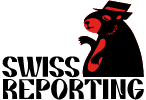Now Reading: Swiss Franc Hits Record High Against Euro Amid Global Uncertainty
-
01
Swiss Franc Hits Record High Against Euro Amid Global Uncertainty
Swiss Franc Hits Record High Against Euro Amid Global Uncertainty

Swiss Franc Hits Record High Against Euro Amid Global Uncertainty
Background
The Swiss franc has long been considered a safe-haven currency during times of global instability. Investors typically flock to the franc when geopolitical tensions or economic uncertainty increase across Europe and beyond. Historically, the Swiss National Bank (SNB) has responded to rapid gains in the franc by using market interventions or adjusting interest rates to maintain price stability and support the nation’s export-driven economy.
What is happening now
In recent trading, the Swiss franc reached its strongest exchange rate against the euro since the discontinuation of the franc-euro peg in 2015. Currency markets have responded to mounting concerns over inflationary pressures and economic slowdowns in major markets such as the Eurozone and the United States. Analysts cite ongoing geopolitical tensions and signs of weakening European growth as principal drivers pushing investors toward the Swiss currency. The SNB has so far maintained its current monetary stance, while closely monitoring any further appreciation.
Impact on Switzerland
While a strong franc is beneficial for Swiss consumers purchasing imported goods, it poses challenges for the country’s export and tourism sectors. Swiss-made products become more expensive for international buyers and tourists face higher costs, which can affect overall demand. Key Swiss industries, such as pharmaceuticals, precision instruments, and hospitality, are already voicing concerns regarding reduced competitiveness. Meanwhile, Swiss residents traveling abroad or buying foreign products benefit from favorable exchange rates.
- Exporters face pressure on profit margins
- Potential decline in tourist arrivals
- Increased purchasing power for Swiss consumers
What happens next
Economists are closely watching the SNB for potential policy interventions if the appreciation continues to threaten economic stability. Any move to cut interest rates or direct currency action could impact global markets. Businesses are expected to increase calls for relief measures if current trends persist. The situation remains fluid and is being updated as new financial data emerges.





















